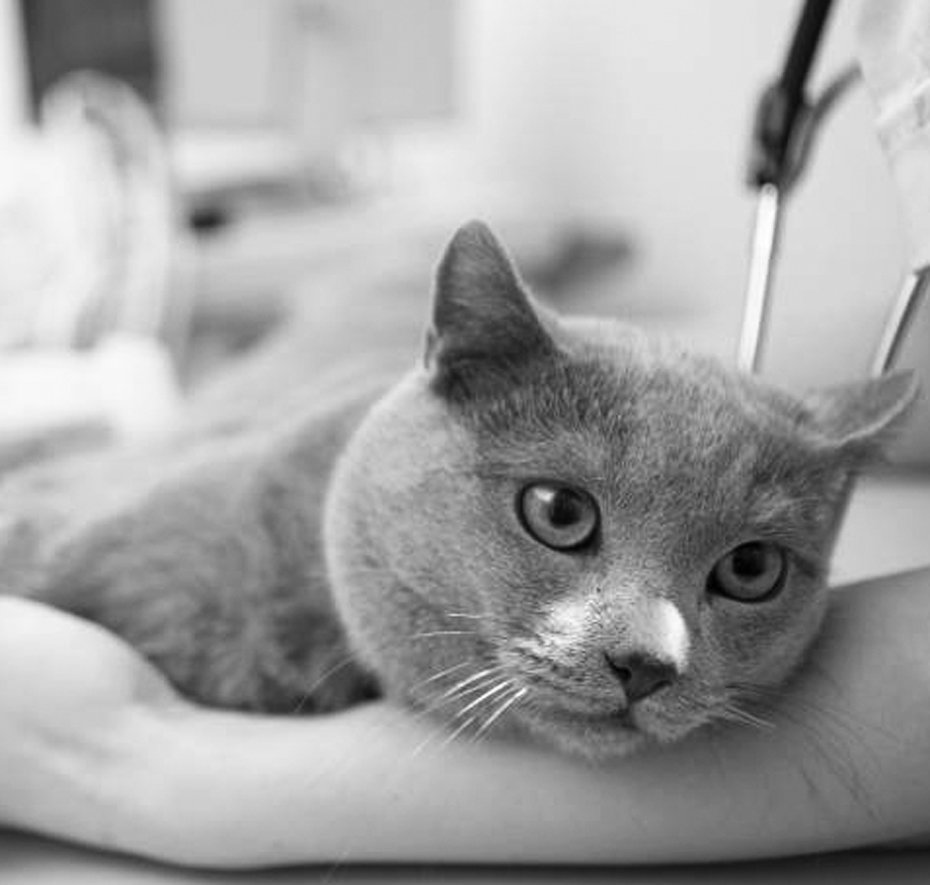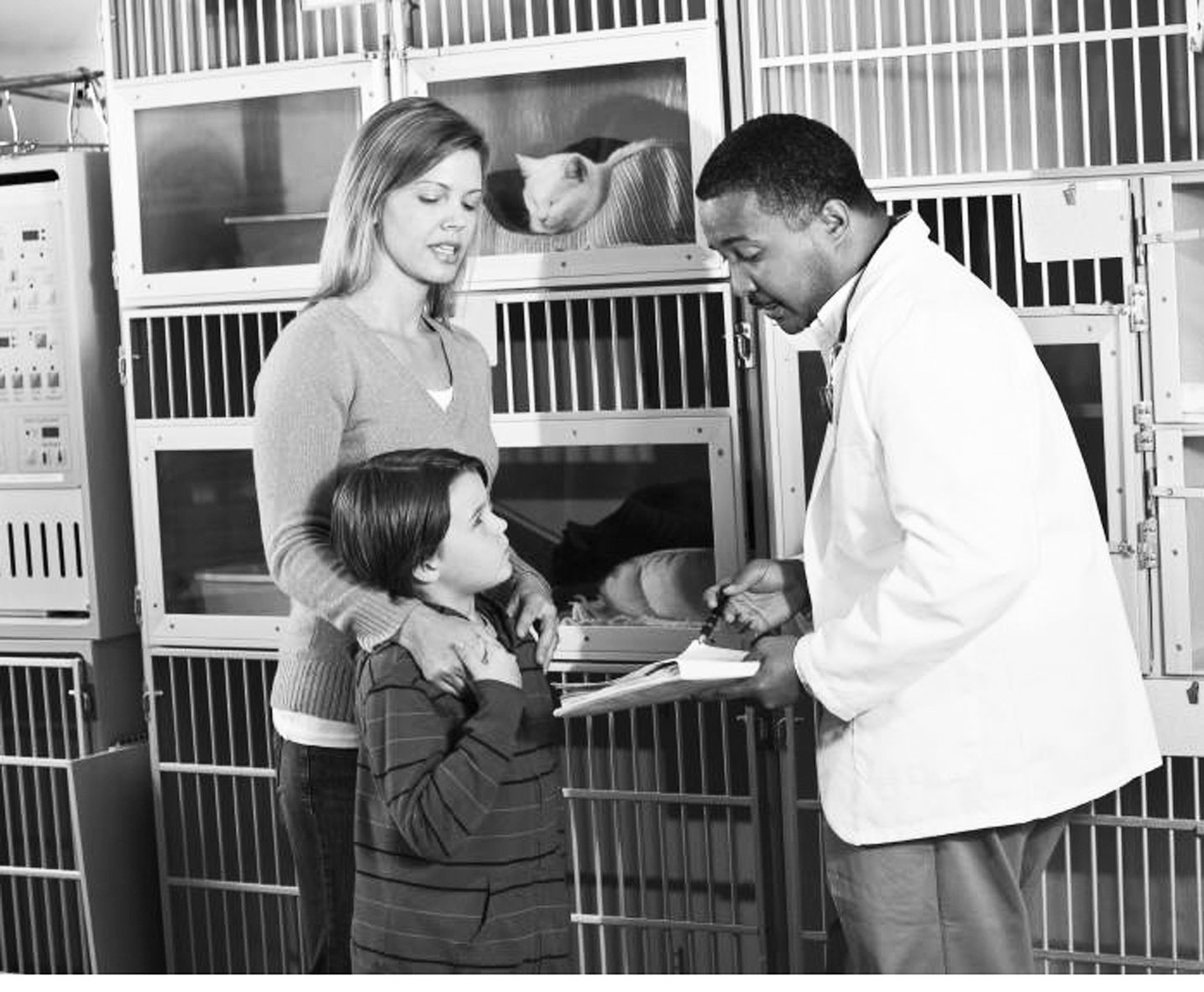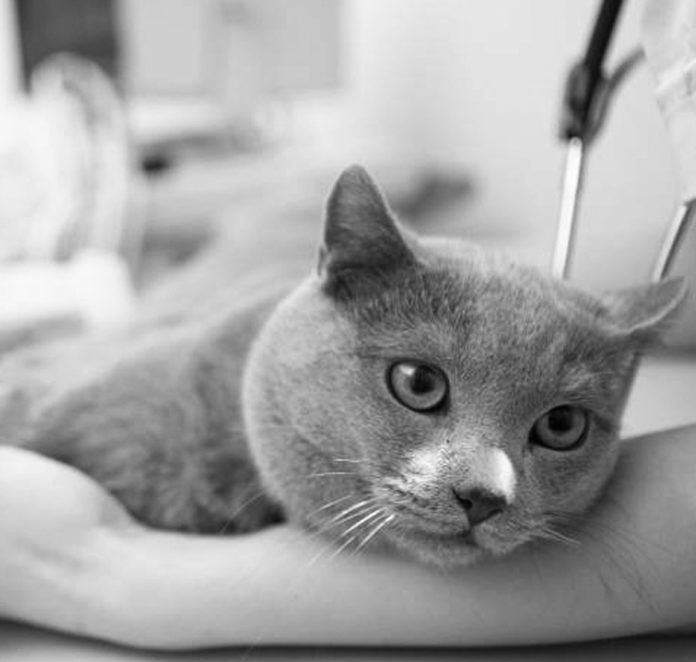[From Tufts September 2011 Issue]
@ISTOCKPHOTO


Whether you’re taking your cat to the veterinarian for a routine check-up or for treatment of a chronic health problem, you want to get the most from your visit. To accomplish this goal, owners should begin by considering what’s “normal” for their cat.
“A veterinarian will ask about subtle changes in a cat’s behavior,” says John Berg, DVM, a surgical specialist at Cummings School of Veterinary Medicine at Tufts University. “Cats can hide their illnesses very well, so owners need to be aware if they start hiding under the furniture, are less interactive with the family or are just less visible around the house as this could indicate a problem.”
Dr. Berg recommends that owners be prepared to explain their complaint or concern to their veterinarian, but suggests letting the veterinarian take the lead in asking the questions.
“Many owners come in with a laundry list of everything their cat is doing and much of that information may not be pertinent to the current problem,” says Dr. Berg. “Excruciatingly detailed observations about what your cat is doing probably won’t help your veterinarian make a diagnosis, but having a good, decent awareness of your cat’s normal habits and trends will.”
Researching an illness and asking questions
Many owners spend time researching their cat’s ailment on the Internet. While some websites are very reliable (such as those of the American Animal Hospital Association, the American Association of Feline Practitioners, and veterinary schools), others — such as cat owners’ personal blogs — are not.
“The problem with the Internet is that medicine is as much an art as it is a science, so owners shouldn’t go into an appointment expecting that their veterinarian is going to recommend something they found online,” says Dr. Berg. “Be cautious — it’s good to be educated, but bad to have biases.”
@ISTOCKPHOTO


Preparing for the visit
If possible, acclimate your cat to veterinary visits when he or she is a kitten. Schedule kitten wellness checks and routine physical exams on a regular basis to help your cat become accustomed to being handled by a veterinarian. Take your cat in to meet the veterinarian and staff during a non-medical appointment as this will make future visits less stressful. Make sure your cat is comfortable going in and out of a cat carrier (let her explore the carrier by leaving it out in the open with treats inside), so she doesn’t associate it only with trips to the veterinarian.
Your veterinarian may not be the only person who works closely with your cat. While the veterinarian will always meet with an owner to go over the medical history, perform a physical examination and administer treatment and prescribe medications, many routine procedures are performed by veterinary technicians.
“Veterinary techs do blood draws, insert IV catheters and clean teeth on a regular basis, so they are extremely adept at these procedures,” says. Dr. Berg. “Technicians, in many cases, are better at these procedures than the veterinarian they work for.”
Put the problem in perspective
All medicine — whether it’s human or veterinary medicine — involves a degree of uncertainty. While owners may immediately wish to know why their cat is ill, veterinarians may not know the diagnosis at the outset of a visit.
“It might take two or three days of testing to reach the proper diagnosis,” says Dr. Berg.
Dr. Berg points out that it’s often helpful to put the problem in perspective.
“Sometimes, owners aren’t sure if their cat’s problem is something they should worry about, so they tend to worry about everything. It’s perfectly acceptable to ask a veterinarian, ‘Is this serious?’ or ‘Is this a problem I should be worried about?’ ” he says. “People are paying for information — for a veterinarian’s expertise and knowledge — so they should feel very comfortable asking questions and asking to have the answers repeated if they don’t understand something.”
To establish a strong owner-veterinarian partnership for the health of your cat, Dr. Berg recommends that you bring along a notebook and take notes during the visit. Go over your notes before leaving and ask for clarification on any points you don’t understand. If your cat needs to be hospitalized, it is important to follow the rules of the hospital.
“These rules are in place to help make life easier for all the personnel in the hospital,” notes Dr. Berg. “When people ask for exceptions, it creates an unnecessary burden on the staff.”
Getting a second opinion
If an owner isn’t satisfied with a particular diagnosis, she (or he) should seek a second opinion.
“A good veterinarian will not be offended by an owner asking whether a second opinion or a referral to a specialist might be appropriate,” says Dr. Berg.
Owners should also feel at ease discussing treatment costs and options with their veterinarian.
“Some people feel guilty if they consider finances when determining a course of treatment for their cat,” says Dr. Berg. “For the most part, veterinarians tend to be very good at factoring in finances. Most veterinarians won’t try to sell the most expensive procedure; they will offer options. As long as an owner understands the potential downside of a less expensive option, it’s OK to make decisions that are partly financially driven. Pet owners do it all the time.”





I really liked your article talking about how internet research shouldn’t be the only basis for treating a cat. As someone who relies on self-study for a lot of things, I assumed that just researching internet cures for my cat would help me keep him healthy. However, he hasn’t gotten much better at all even after I try these cures out, so I’ll definitely look for a veterinarian in the area that I can consult and have them treat him.